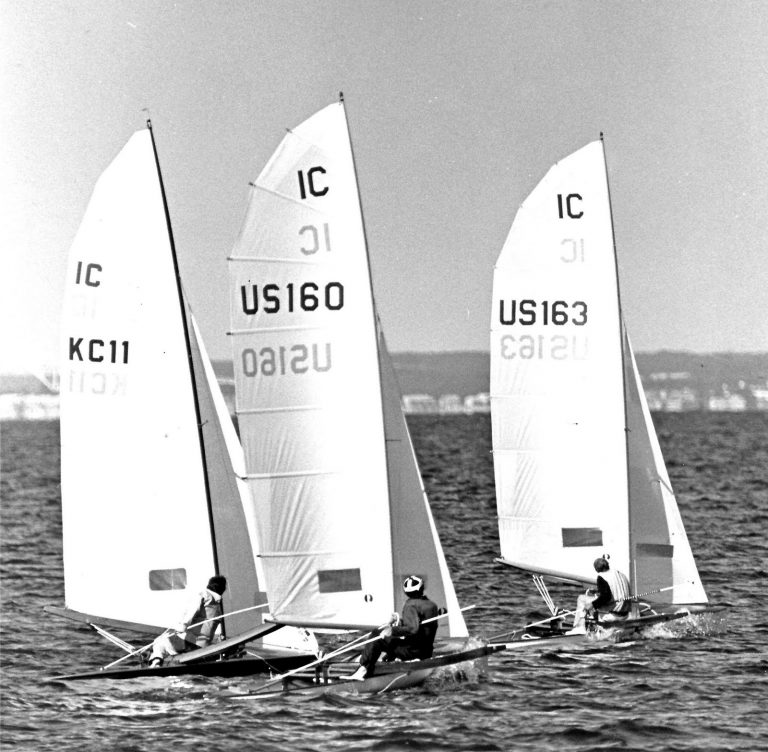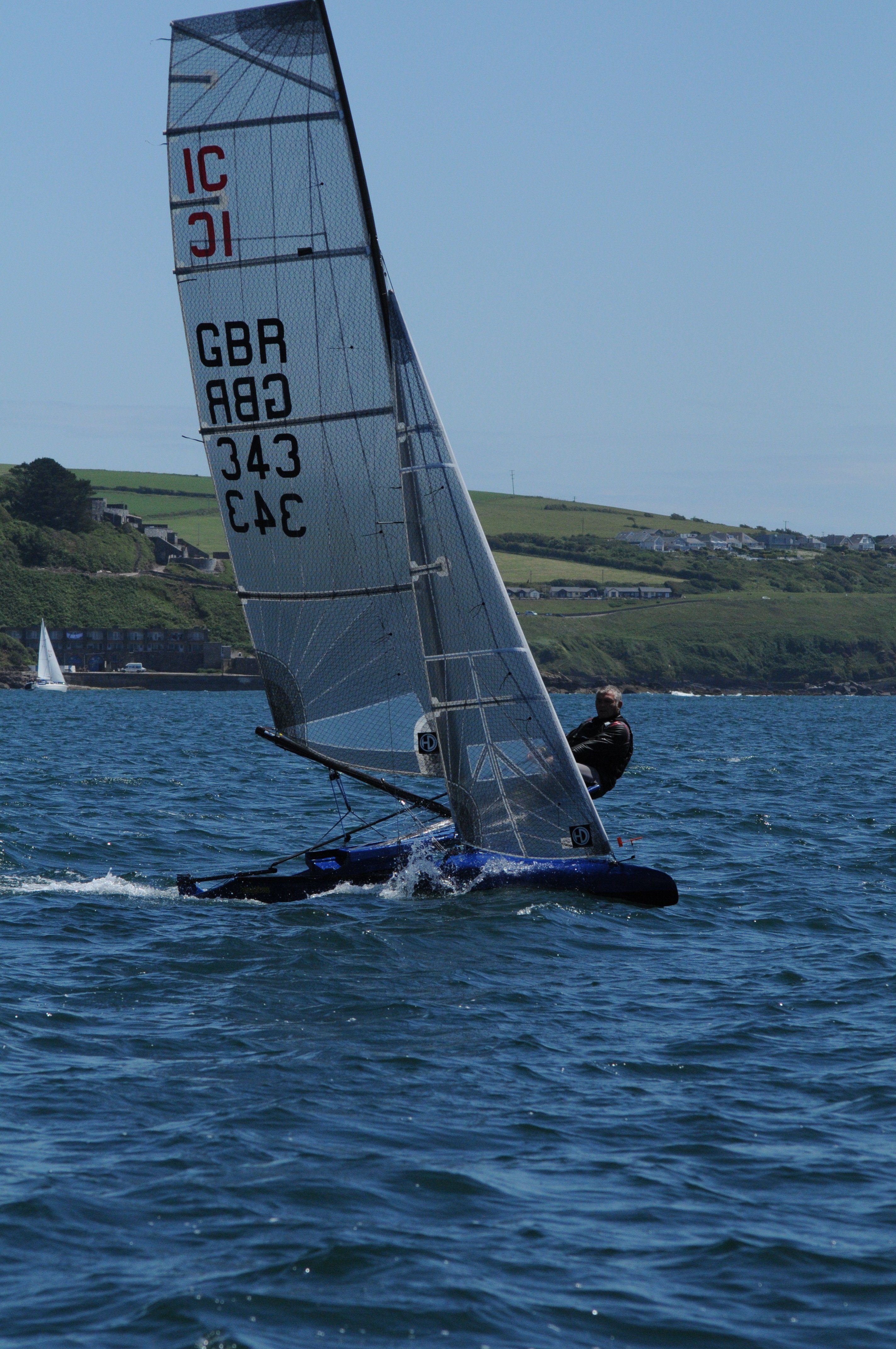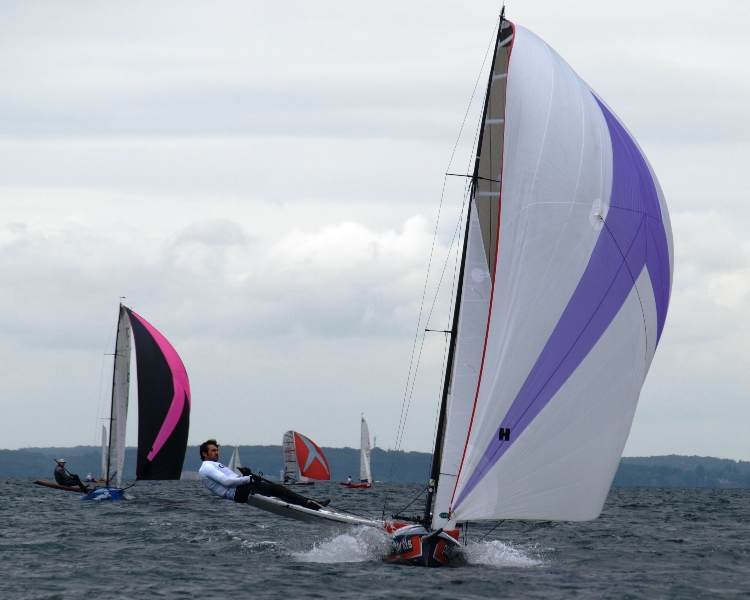History Of the IC
The roots of the class go back to the mid 1800’s where paddling canoes where fitted with sails and raced, particularly in Britain, USA and Sweden. These boats have changed quite a bit since then but the main characteristics of the boat is a long narrow hull form with rounded transom and the famous sliding seat.
After many decades of development around the world including some famous designs from Uffa Fox, the hull shape had evolved into an optimal design based on the rules at that time. In the 1970’s the class agreed to create an International one design hull shape based on lines drawn up by a Mr Peter Nethercot. The development of deck layout, fittings, rig and seat were still able to be developed within some broad rule definitions. The IC then became a stable platform and enjoyed worldwide status at the fastest single handed monohull in the world.
Development Class
One of the main attractions of the IC is International competition. World Championships are held every three years moving between continents. The last Worlds was at Richmond USA in 2014 sailing on the infamous San Francisco Bay area where sailors from US, UK, Germany, Australia, Sweden and Canada competed. The next Worlds will be held at Pwllheli in the summer of 2017.
In 2009 a new set of rules was adopted internationally to allow the IC to once again become a development class. The new rules are based on a set of simple box rules defining only maximum length of 5200mm and a beam measurement station where there must be a minimum beam of 750mm measured between 125-275m vertically from the outer skin. Weight is reduced to a minimum all up weight of 50kg and there is an option for a una rig.
The new rules IC have been developed professionally in the UK by Andy Patterson of Bloodaxe boats, and Rob Bell and Steve Clarke of C12 Performance Boats. Designs are from Phil Morrison (M1,2,3) and Alistair Warren (Dragonfly)in the UK and a modified US Chris Maas (String Theory)design . A few amateur builders have developed their own shapes using carbon fibre foam sandwich construction or laser cut plywood.
After many decades of development around the world including some famous designs from Uffa Fox, the hull shape had evolved into an optimal design based on the rules at that time. In the 1970’s the class agreed to create an International one design hull shape based on lines drawn up by a Mr Peter Nethercot. The development of deck layout, fittings, rig and seat were still able to be developed within some broad rule definitions. The IC then became a stable platform and enjoyed worldwide status at the fastest single handed monohull in the world.
Developing the Asymmetrical
In the late 1990’s, the Nethercott design was developed further in the UK with the addition of an asymmetric spinnaker to improve downwind performance. This completely rejuvenated the class at a time when asymmetric sailing and skiffs where starting to become popular.
Driven in the UK by Rob Michael of Razorback Boats, a system was designed for conversion to AC format and was adopted by many of the UK fleet. This format has been highly successful attracting sailors from other singlehanded skiffs into the class and numbers grows steadily with older IC’s being converted and new boats being built at a rate of 2-3 per year. The AC has been adopted by some of the German fleet with a small number on Australia and USA.
At events in the UK the IC and AC fleets sail together over an Olympic sausage/triangle coarse as surprisingly similar speeds.
The AC continues to develop but will retain the Nethercot hull design as a more stable platform for the spinnaker. The AC sails off a PY of 870.
After many decades of development around the world including some famous designs from Uffa Fox, the hull shape had evolved into an optimal design based on the rules at that time. In the 1970’s the class agreed to create an International one design hull shape based on lines drawn up by a Mr Peter Nethercot. The development of deck layout, fittings, rig and seat were still able to be developed within some broad rule definitions. The IC then became a stable platform and enjoyed worldwide status at the fastest single handed monohull in the world.
An important aspect of the Canoe fleet and one for which it is famous, is the hospitality and friendiness of its sailors. New recruits are most welcome; we work hard but we play hard too. The social scene is important to canoe sailors who are just as happy talking about in the bar afterwards.
As with all things in life, the greater the challenge, the greater the reward. Once the canoe is mastered, you will experience one of the most exhilarating thrill that sailing can offer.
Nethercott (ICOD)
The original International Canoe now sailed as a strict one design. A great entry to the class.
International Canoe
One slim boat, 2 sails and one slide. The International Canoe in its original form.
Asymetric International Canoe
Exactly the same as the International Canoe but with an asymmetric Spinnaker for even more excitement.



